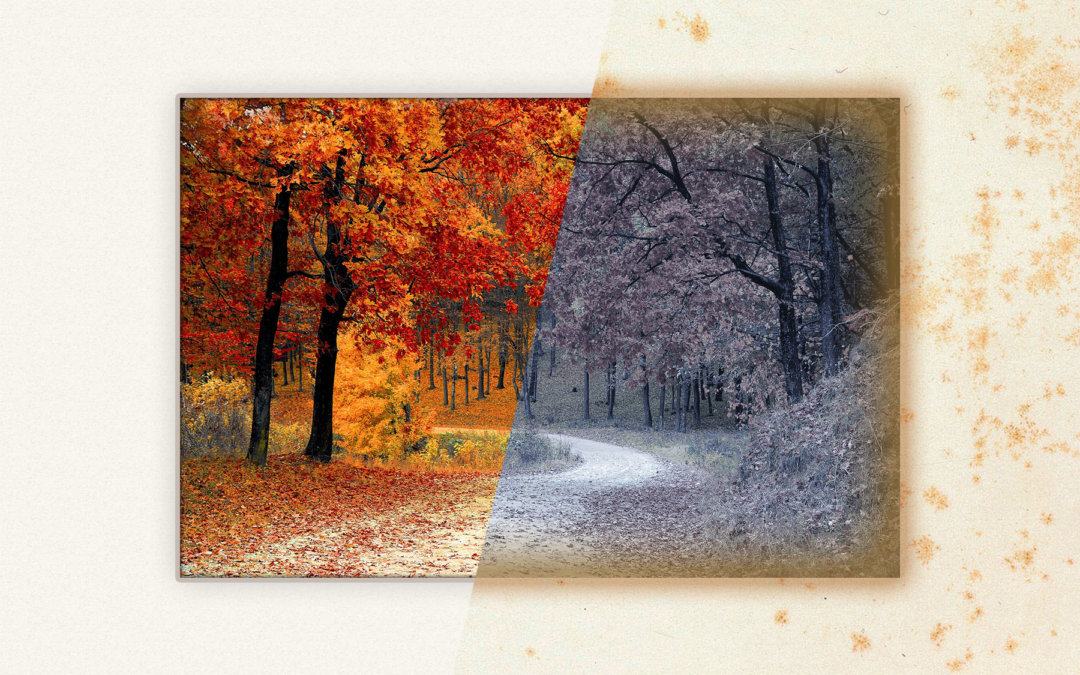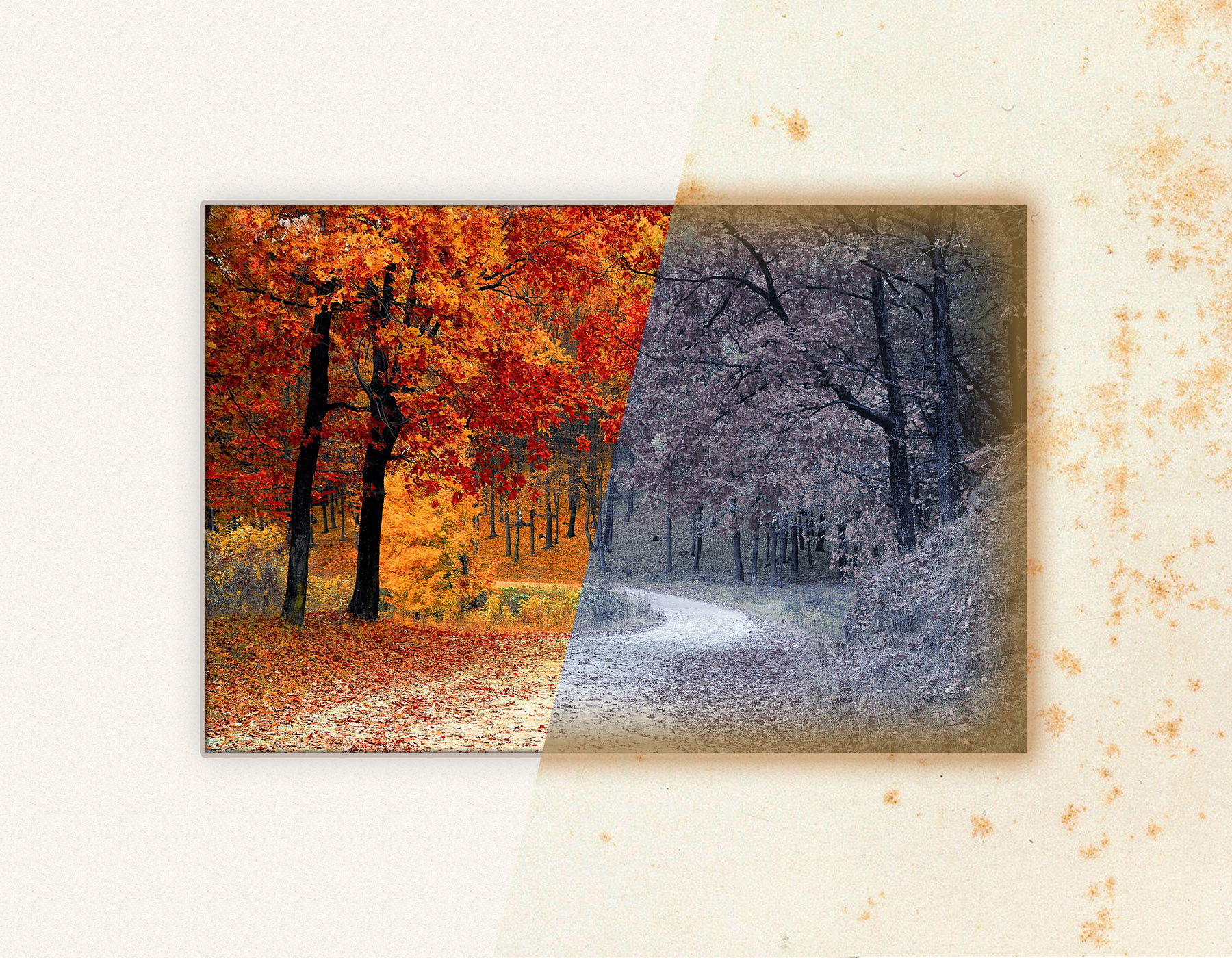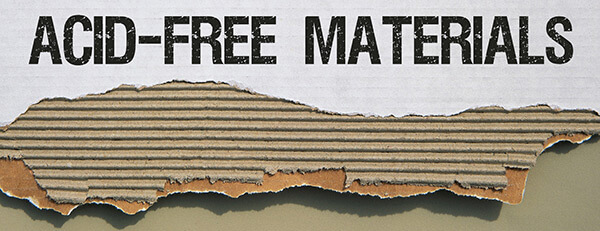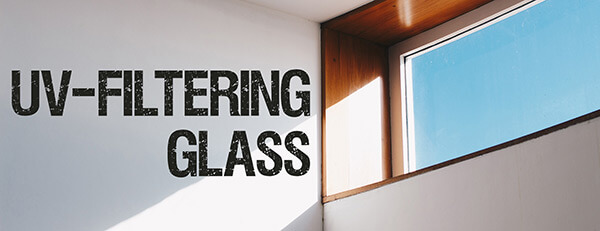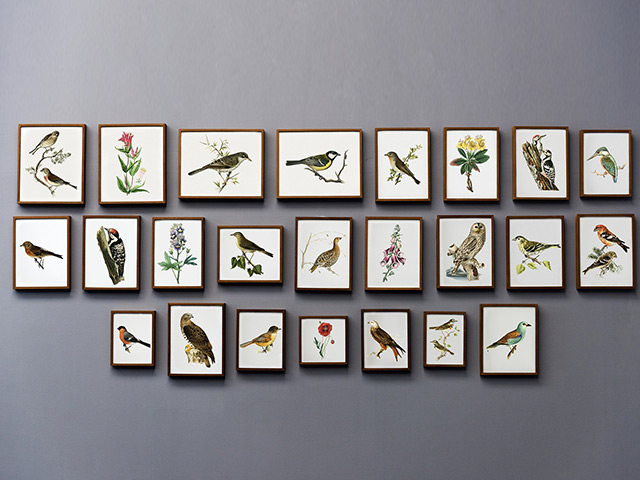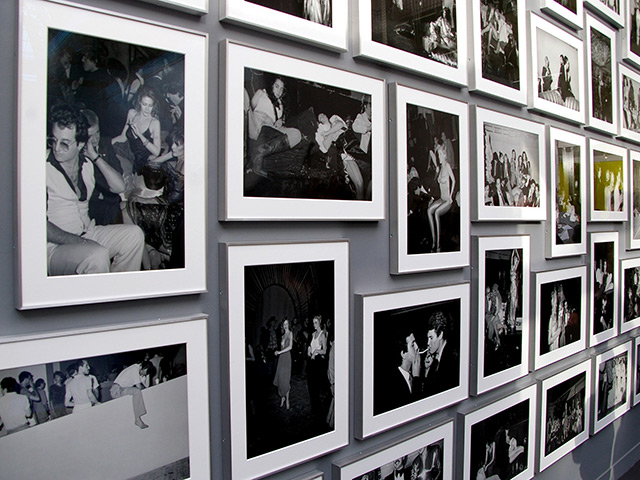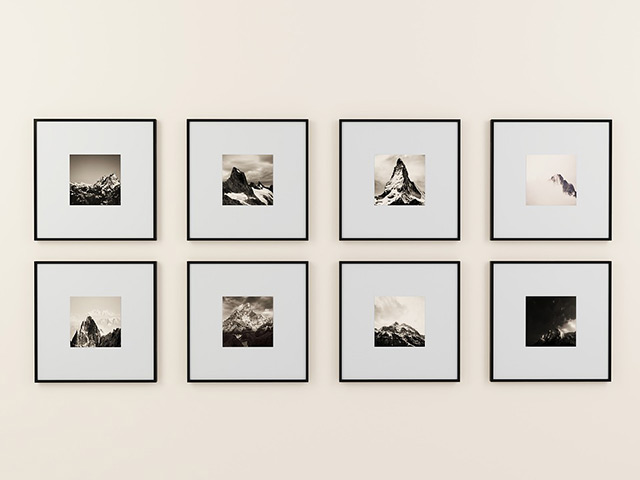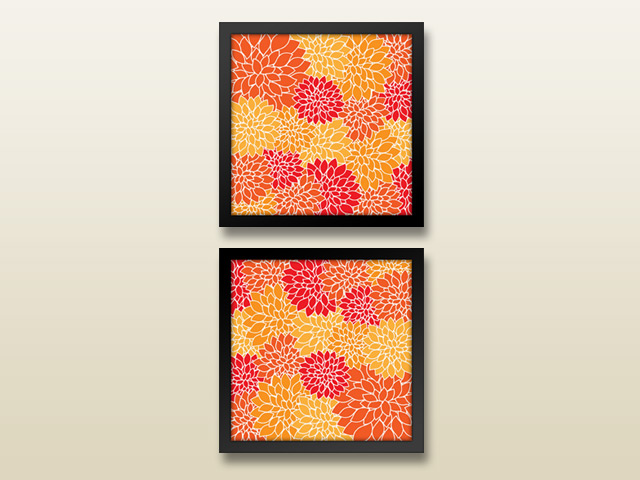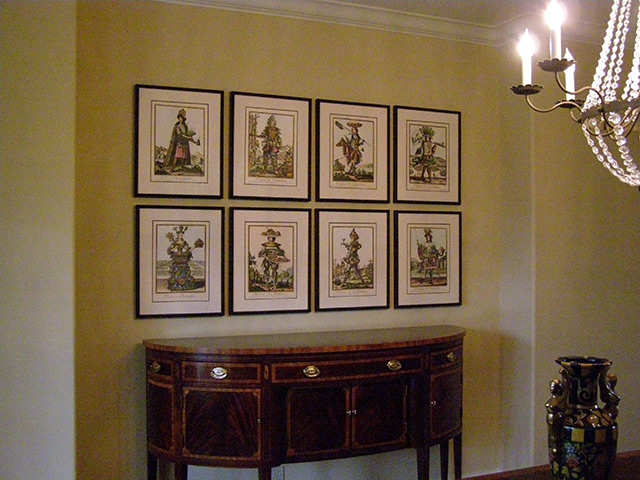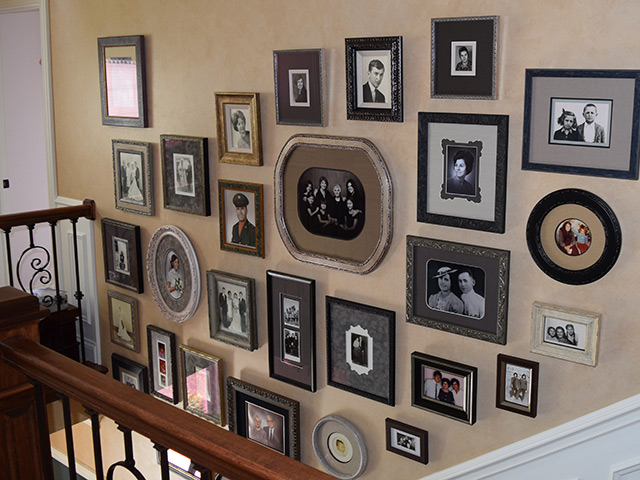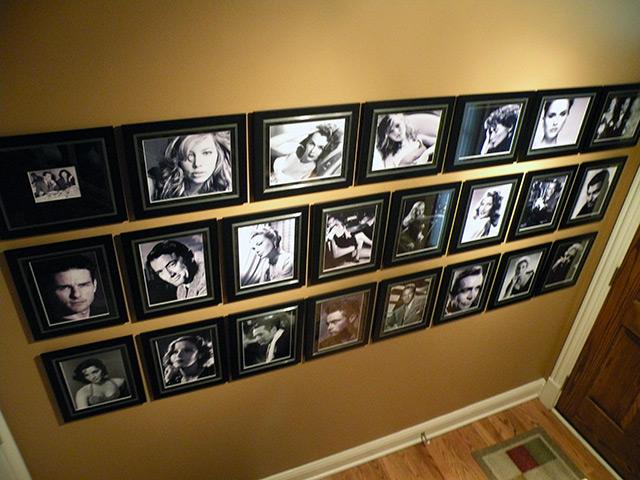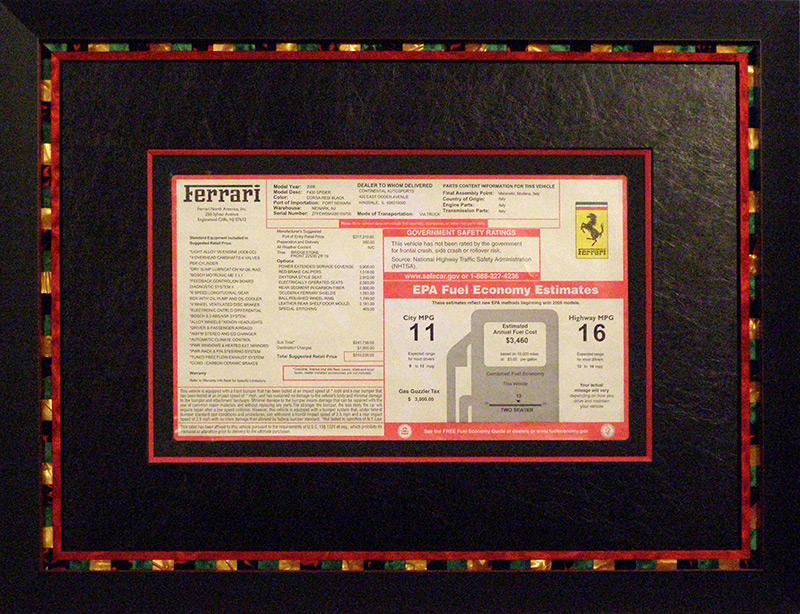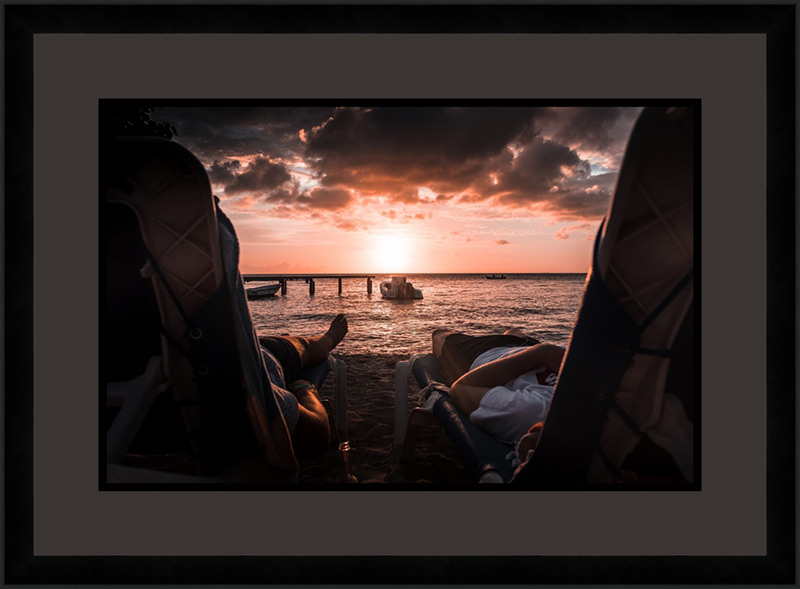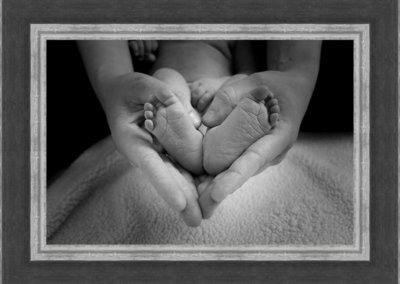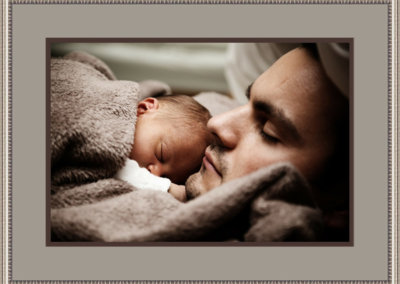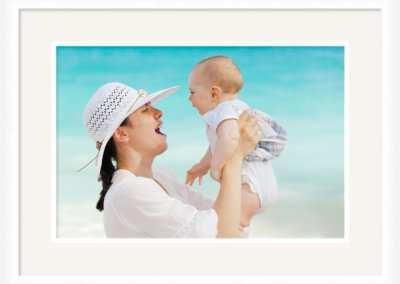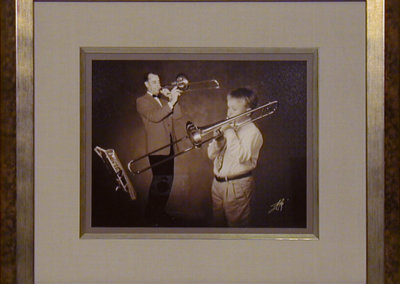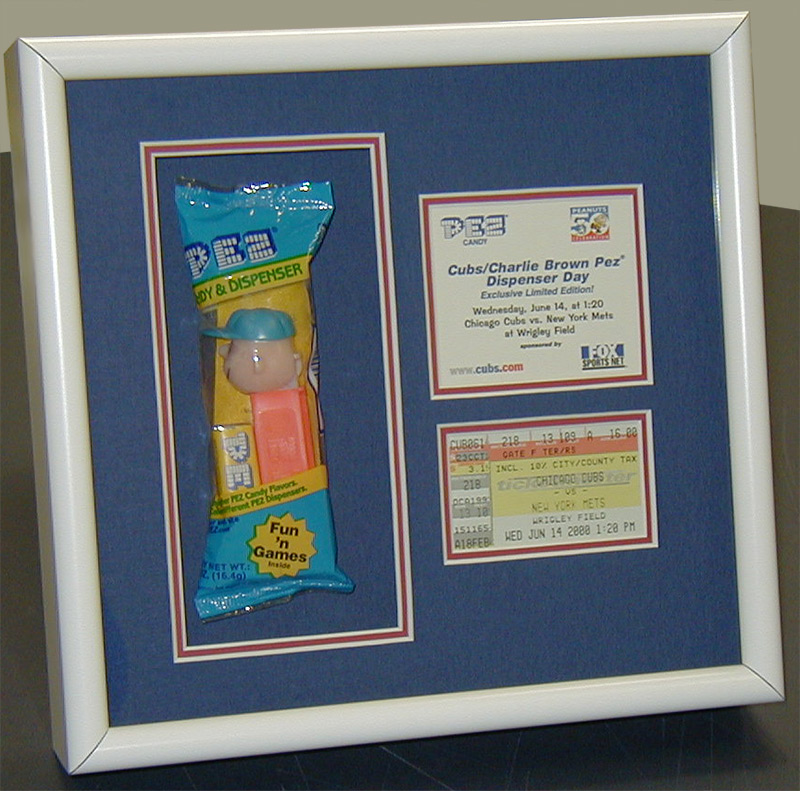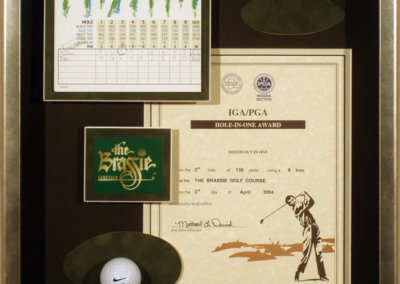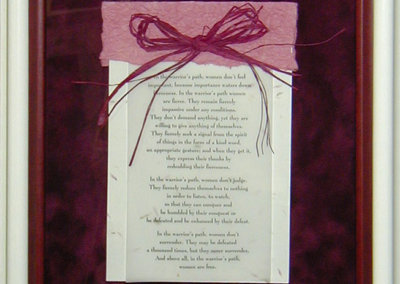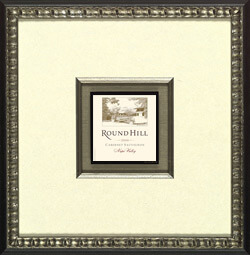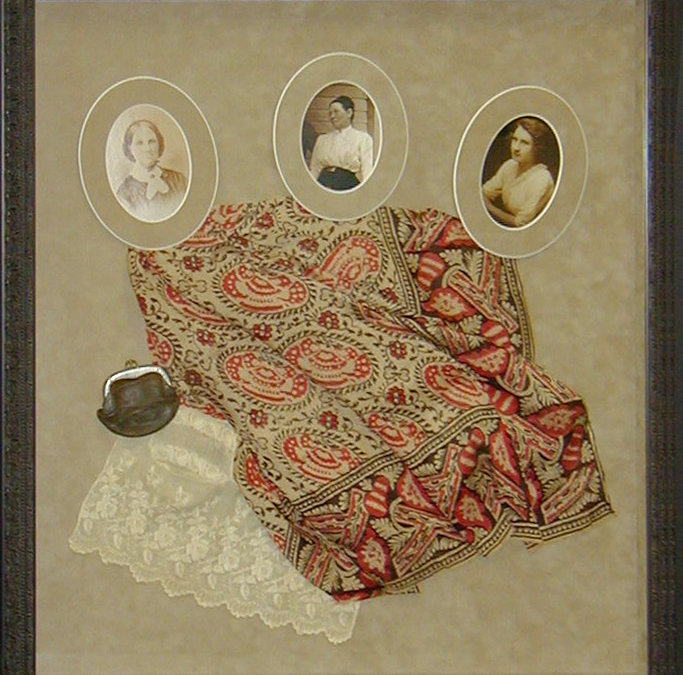
Four steps to creating a memorable project
Four steps to creating a memorable project
Taking a project from conception to completion
When you bring your framing project to us, you expect the best, and that is exactly what you will get from start to finish. We organize, design, and create complex framing projects from your treasures. From creative ideas to hanging hardware, we provide innovative design and quality workmanship, so you can enjoy your piece for years.
A collection of keepsake items may seem overwhelming to safely store and keep track of, while still being able to enjoy them. Custom framing will solve these challenges and create a beautiful display you will be proud to show off.
Shadowboxes are sometimes called memory boxes, and for good reason. They are the perfect way to showcase special objects and photos that celebrate a memory, achievement, event or person. We are experts in creating artistic presentations from your items — just bring them in and we can create a truly one-of-a-kind memory for you.
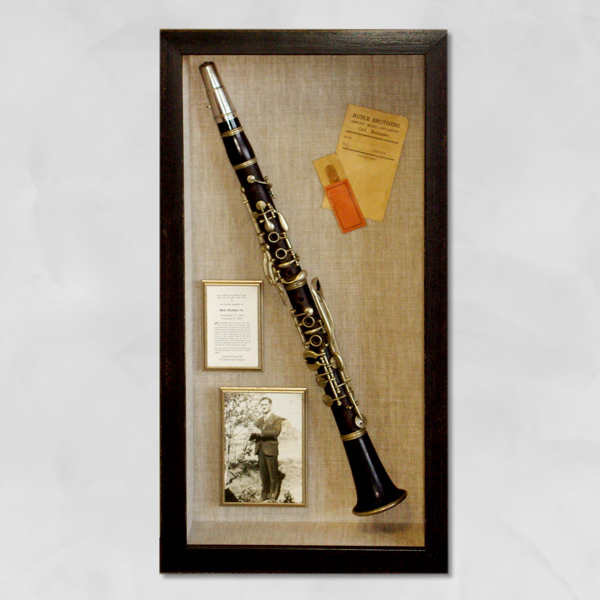
Follow these four steps to create a memorable framing project!
- STEP 1: Select your project theme. Some examples include Grandpa’s Army Days,Child’s Hand Print, Grandma’s Scarf,or Dad’s Passion.
- STEP 2: Gather all items that relate to your theme — photos, clothing, mementos, medals, certificates — anything that’s scrapbook-worthy.
- STEP 3: Bring your items to us. We will help you arrange them in an aesthetically pleasing manner.
- STEP 4: We’ll work our framing magic and present you with a completed framed project, so you can cherish your memories for a lifetime!
Here are some examples that illustrate how complex projects go from concept to completion!
Grandma’s Scarf
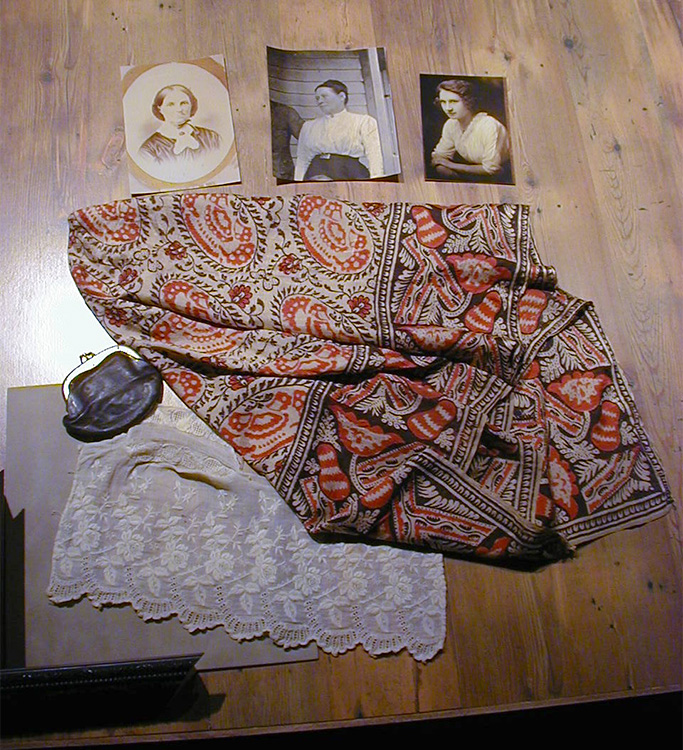
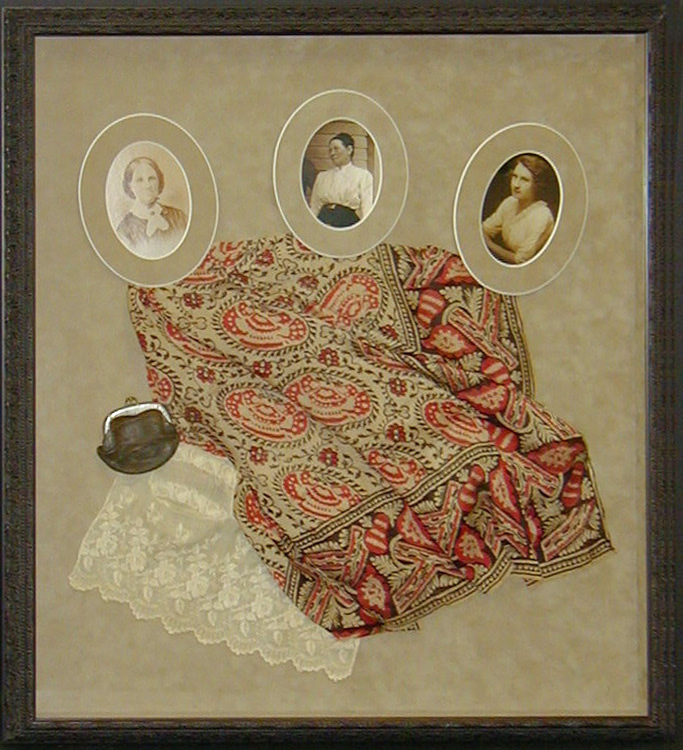
It was early fall. My Mom and I were going to take a short walk to the local bakery for some yummy scones and a cup of coffee. Mom threw on her wrap that had been passed down three generations — and would eventually be mine someday. It was beautiful, and perfect for the crisp chill in the air. As we were chatting, I noticed the scarf had become threadbare in some places. I told Mom that when it was mine, I would like to honor it by framing it in a shadowbox, so that it would not become any more damaged. She thought that was a wonderful idea, and suggested I add pictures of the women who had worn it. Every time I look at grandma’s scarf, I think of that fall day when Mom and I were at that cozy coffee shop enjoying each other’s company.
Family heirlooms are beautiful items passed down from generation to generation, and it is our job to capture their beauty and preserve their sentimental importance. Heirlooms like textiles, scarves, wedding dresses, and handkerchiefs are hand-sewn and protected behind UV-filtering glass. History and tradition come together in a design that mimics the vintage colors and textures of old photographs and fabrics.
Child’s Hand Print
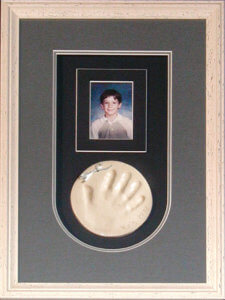
The day my son brought home his little hand print in clay, I didn’t know what to do with it. I wanted to hang it, but didn’t trust the ribbon used for a hanger. So, I gushed over it, and a week later put it in a box so that it wouldn’t get broken. Eight years later, I was cleaning the closet, and opened a box that I had forgotten about. Seeing that clay print brought back the day he brought it home. I never wanted to forget it again. Now when I look at that precious handprint, I can remember that day every day!
Kids grow up in the blink of an eye, but the art — and memories — they leave with us lasts a lifetime. Frame your child’s greatest masterpiece and you can enjoy those memories every time you look at your finished piece. Their first scribbles, handprints, and school art projects make for memorable framing projects. For this ceramic handprint, we used neutral mat colors so the design would always remain in-style; the frame is a soft off-white to match the ceramic.
Dad’s Passion
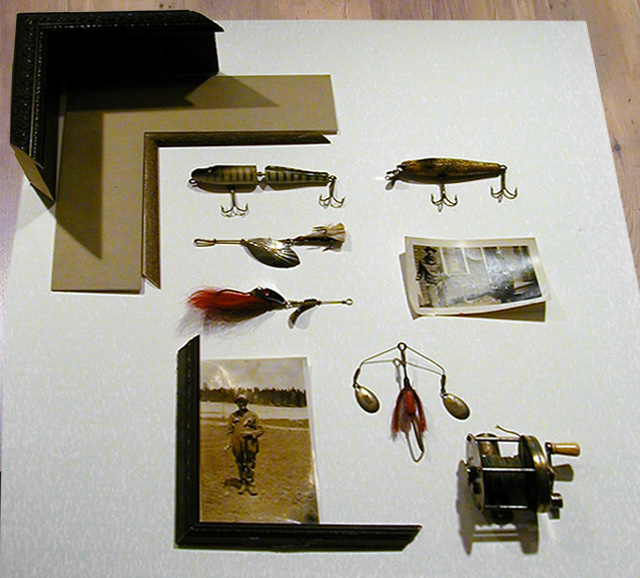
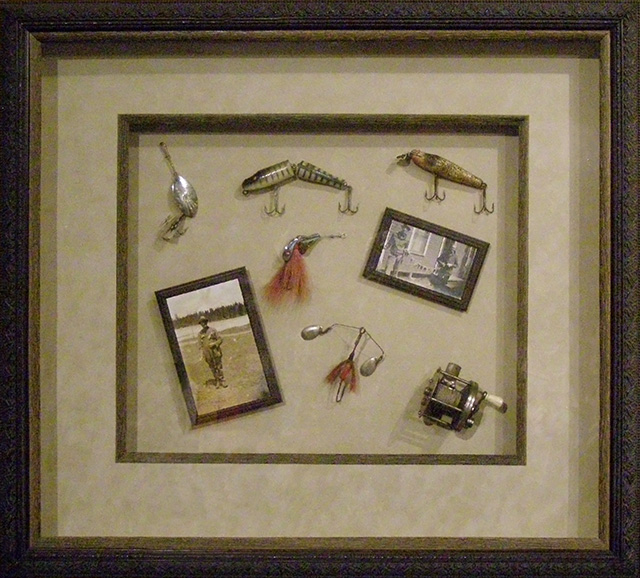
Many times in my childhood, I remember my Dad grabbing his fishing pole to spend a day at his favorite lake. Some days he caught something; some days not. But he didn’t care; it wasn’t about the bounty — it was about being outside and having the hope & faith that something would catch the end of his line. Many years after having some of his favorite fishing pieces framed, it is a bit of history passed to my children about my Dad’s Passion.
Some hobbies come with a great deal of collectibles or representational items that define our personalities. Framing is a great way to honor and cherish those collections (and the person attached to those memories). Whether it’s fishing lures, coin collections, or spoons, we can create a beautiful display to celebrate that person. For this project, we opted for neutral colors and rustic finishes to highlight the sport and vintage style.
Additional Topics
Conservation/Preservation Framing
We use the very best materials for your projects because we want your art and heirlooms to survive for a lifetime without change of color, damage from glues, or out-gassing from materials that are not acid-free.
Museum Glass
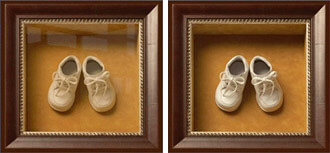
Is there anything worse than getting something framed and not being able to see it? That won’t happen with Museum Glass. Not only does it have 99% UV protection to keep your art and objects from fading, it has exceptional clarity so that you can really SEE what is behind your frame!

